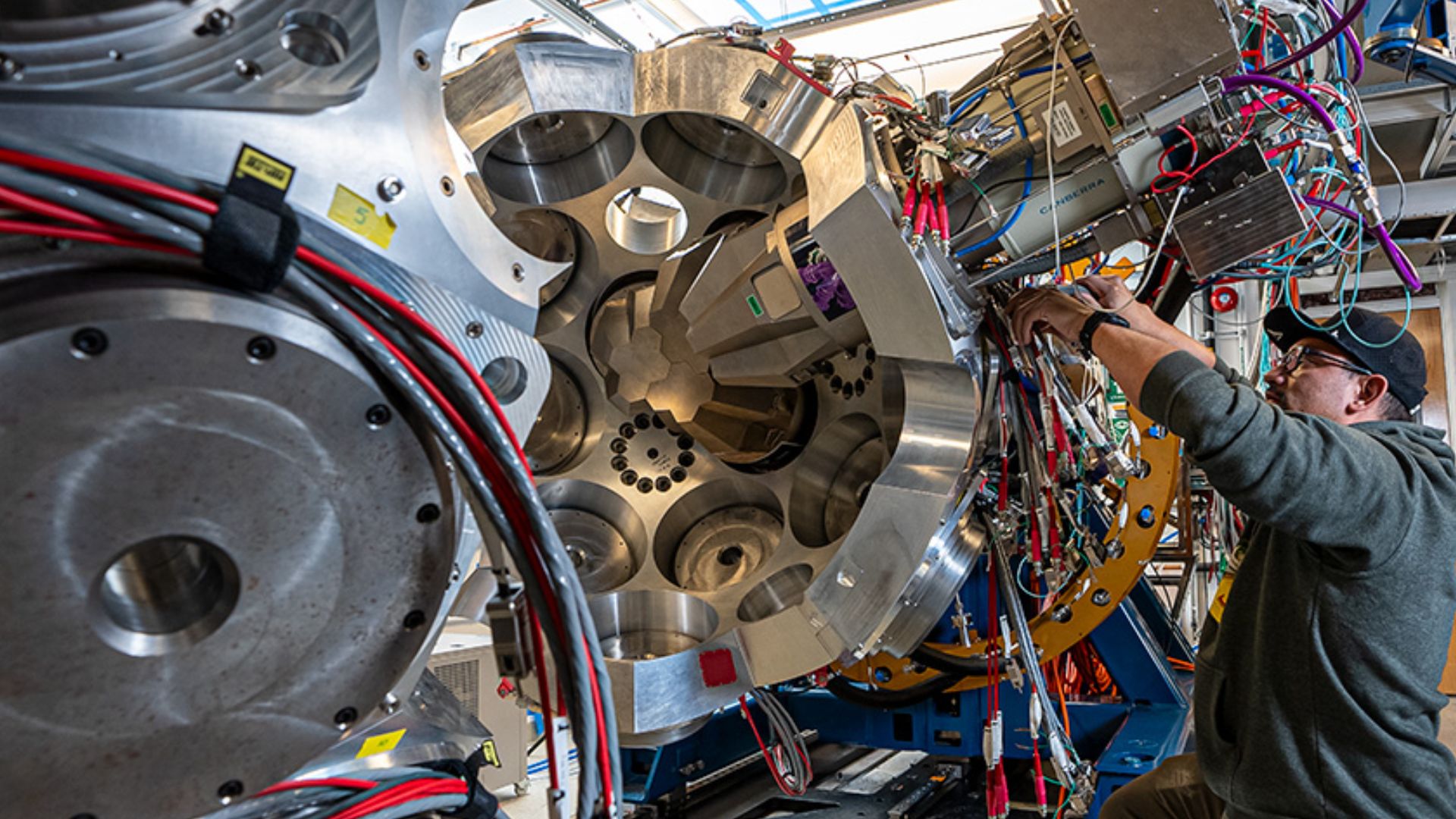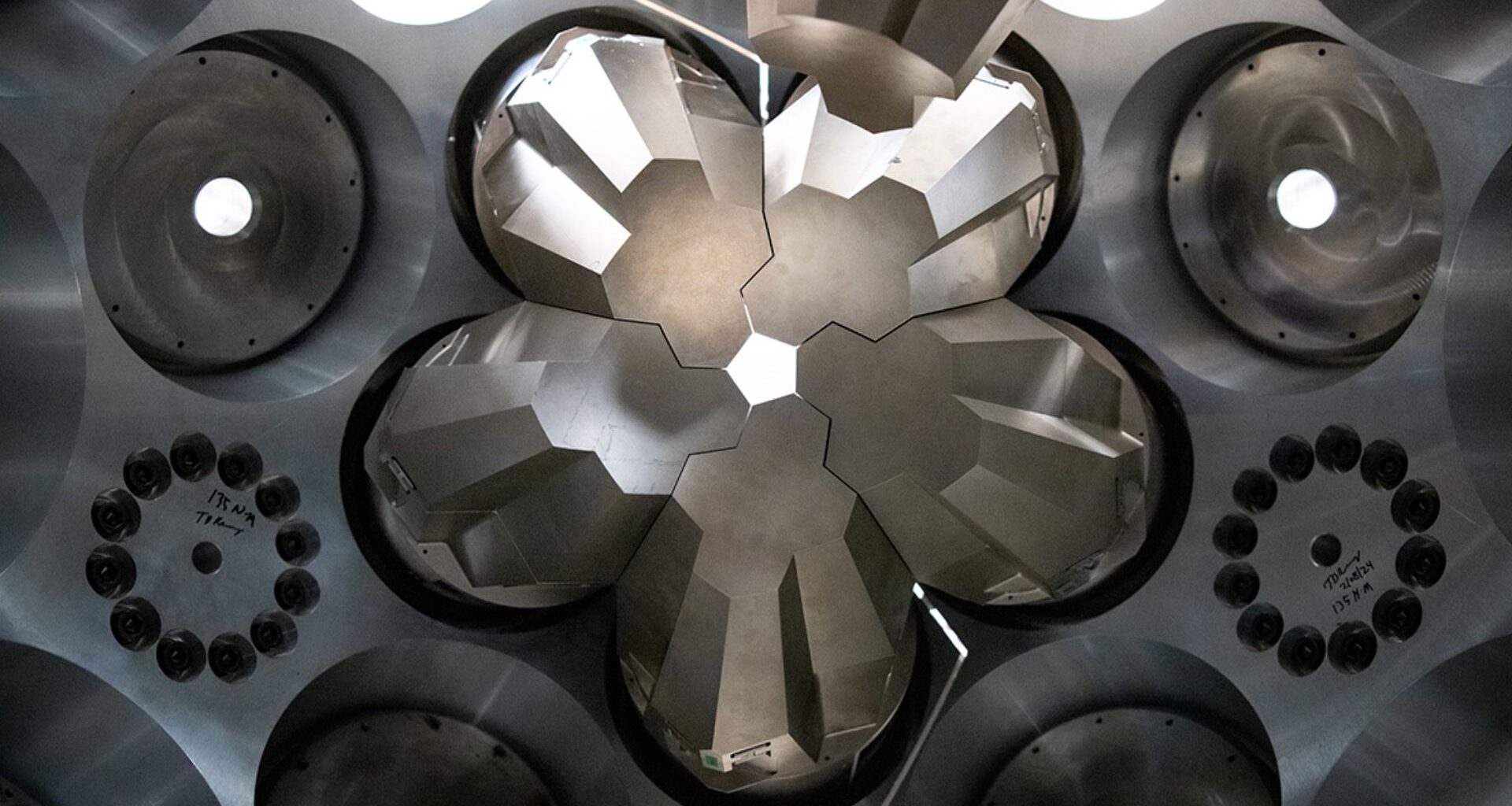Researchers have completed the major construction of the Gamma-Ray Energy Tracking Array (GRETA), a next-generation nuclear detector designed to deliver the most precise measurements yet of atomic nuclei. Developed under the U.S. Department of Energy’s Lawrence Berkeley National Laboratory (Berkeley Lab), GRETA will soon be shipped to the Facility for Rare Isotope Beams (FRIB) at Michigan State University (MSU) for installation and commissioning.
The project marks a milestone in nuclear physics research, with GRETA poised to study the structure and properties of atomic nuclei in unprecedented detail. The detector will use multiple high-purity germanium crystals to track gamma rays emitted from nuclear decays, capturing their energy and 3D paths with exceptional resolution. This will enable scientists to explore how stars forge heavy elements, test the limits of nuclear stability, and create and probe hundreds of new isotopes.
“Our goal was to make the best high-resolution, high-efficiency gamma-ray detector we possibly could, so we can answer big questions about the nature of matter and fundamental forces,” said Paul Fallon, GRETA’s project director. “With every advance in this technology, we can improve our resolving power and see weaker structures. GRETA will be 10 to 100 times more sensitive than previous nuclear science experiments.”
Advancing nuclear research
GRETA’s construction included assembling germanium detector modules, electronics, a mechanical support frame, and computing systems. The device was built at Berkeley Lab with contributions from scientists and engineers across its nuclear science, engineering, and computing divisions, along with MSU, Argonne National Laboratory, and Oak Ridge National Laboratory (ORNL).
Once operational at FRIB, researchers will direct particle beams at targets placed at GRETA’s center, producing energetic and often rare atoms. The gamma rays emitted as these atoms stabilize will be measured by GRETA’s detectors, offering a unique “fingerprint” for each isotope.

According to Heather Crawford, deputy project director for GRETA, “Gamma-ray spectroscopy is among our most powerful tools to learn about the fundamental nature of the atomic nucleus. The excited states and gamma rays are a fingerprint for each isotope. GRETA is the world’s most powerful microscope to examine these fingerprints and answer questions about the nucleus and the forces that govern it.”
The detector will enable the study of rare isotopes, nuclear drip lines, limits where neutrons or protons can no longer remain bound, and pear-shaped nuclei, which could reveal symmetry violations in nature and shed light on why the universe is dominated by matter rather than antimatter. FRIB’s capability to produce more than 1,000 new isotopes will significantly expand the scope of such experiments.
A complete spherical design
GRETA builds on the earlier GRETINA project, which used 12 germanium detector modules. The new system will increase the count to 30 modules, completing a full sphere around the target and improving detection efficiency. Each module contains four ultra-pure germanium crystals, tapered into hexagonal shapes, and cooled to about minus 300 degrees Fahrenheit cryogenic temperatures for optimal performance.
The aluminum frame holding the modules is engineered with extreme precision, aligned within one millionth of an inch, to ensure perfect reassembly when opened for target changes. Each half of the frame can rotate, allowing safe installation of modules before final positioning.
The detector’s new electronics can handle up to 50,000 signals per second from each crystal, while its dedicated computing cluster processes up to 480,000 gamma-ray interactions per second in real time.
During testing, GRETA exceeded this target, reaching 511,000 interactions per second. It may also serve as the first platform for DELERIA, a high-speed data streaming system capable of transferring experimental results over DOE’s ESNet network to supercomputing facilities for near-instant analysis.
Once installed at FRIB, GRETA will be used across multiple experimental stations and later at Argonne National Laboratory. Its flexibility and sensitivity are expected to push the boundaries of nuclear science, offering researchers faster and more detailed insights into the building blocks of matter.
